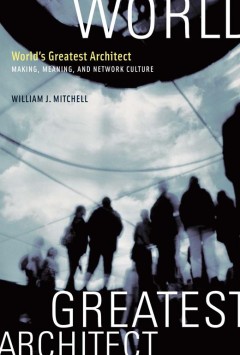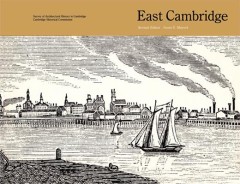Filter by

China's Architecture in a Globalizing World :Between Socialism and the Market
China is currently in the midst of an unprecedented building boom and, indeed, interest in Chinese contemporary architecture has been fuelled by this huge expansion. Through a cutting-edge theoretical discussion of Chinese architecture in relation to Chinese modernity, this book examines this phenomenon in detail. In particular, it highlights how changes in the social-political system, the resi…
- Edition
- 1st Edition
- ISBN/ISSN
- 9781351363297, 1351363298
- Collation
- -
- Series Title
- -
- Call Number
- 720

Public interiority: exploring interiors in the public realm
- Edition
- -
- ISBN/ISSN
- 9781003493501
- Collation
- -
- Series Title
- -
- Call Number
- -
- Edition
- -
- ISBN/ISSN
- 9781003493501
- Collation
- -
- Series Title
- -
- Call Number
- -

Towards a metropolitan public space network: lessons, projects and prospects …
Public space as network / Ana Beja da Costa and João Rafael Santos -- Public space and food production / Leonel Fadigas -- Metropolitan park constellations of ecological systems : lessons from Ho Chi Minh City / Kelly Shannon.
- Edition
- -
- ISBN/ISSN
- 9781003408611
- Collation
- -
- Series Title
- -
- Call Number
- -

Assessment of Energy-Efficient Building Details for Seismic Regions
This open access book presents a methodology for the assessment of structural building details, taking into account the contemporary guidelines for earthquake-resistant and energy-efficient buildings. A review of structural details for energy-efficient buildings revealed that in some cases the structural system is interrupted, leading to solutions which are not suitable for earthquake-prone reg…
- Edition
- 1
- ISBN/ISSN
- -
- Collation
- -
- Series Title
- Springer Tracts in Civil Engineering
- Call Number
- IX, 206

iCity. Transformative Research for the Livable, Intelligent, and Sustainable …
This open access book presents the exciting research results of the BMBF funded project iCity carried out at University of Applied Science Stuttgart to help cities to become more liveable, intelligent and sustainable, to become a LIScity. The research has been pursued with industry partners and NGOs from 2017 to 2020. A LIScity is increasingly digitally networked, uses resources efficiently, an…
- Edition
- 1
- ISBN/ISSN
- 978-3-030-92096-8
- Collation
- -
- Series Title
- -
- Call Number
- XLI, 371

University prints : miscellaneous prints
- Edition
- -
- ISBN/ISSN
- -
- Collation
- 227 pl. : 22 cm
- Series Title
- -
- Call Number
- 720 UNI
- Edition
- -
- ISBN/ISSN
- -
- Collation
- 227 pl. : 22 cm
- Series Title
- -
- Call Number
- 720 UNI

Design Things
Thomas Binder, Giorgio De Michelis, Pelle Ehn, Giulio Jacucci, Per Linde, and Ina Wagner."A new perspective on design thinking and design practice: beyond products and projects, toward participatory design things.OCLC-licensed vendor bibliographic record.
- Edition
- -
- ISBN/ISSN
- 9780262298254
- Collation
- 1 online resource (xvi, 239 pages) :illustrations.
- Series Title
- -
- Call Number
- -

World's Greatest Architect: Making, Meaning, and Network Culture
Function and meaning in architecture and elsewhere, from tongue-in-cheek instructions for creating a surveillance state to reflections on the architecture of the potato chip.World's Greatest Architect: Making, Meaning, and Network Culture Artifacts (including works of architecture) play dual roles; they simultaneously perform functions and carry meaning. Columns support roofs, but while the …
- Edition
- -
- ISBN/ISSN
- 9780262288217
- Collation
- -
- Series Title
- -
- Call Number
- -

Localist Movements in a Global Economy: Sustainability, Justice, and Urban De…
An overview of the localist movement in the United States, from “buy local” campaigns to urban agriculture, and its potential for addressing global problems of sustainability and justice. The internationalization of economies and other changes that accompany globalization have brought about a paradoxical reemergence of the local. A significant but largely unstudied aspect of new local-gl…
- Edition
- -
- ISBN/ISSN
- 9780262255486
- Collation
- -
- Series Title
- -
- Call Number
- -

Survey of Architectural History in Cambridge: East Cambridge (Second Edition)
This series, called the Survey of Architectural History in Cambridge, was among the first inventories of its kind in America.Shortly after the Cambridge Historical Commission was established it embarked on the task of surveying Cambridge's architectural resources. The Commission published five reports, from 1964 to 1977, on each area of the city. This series, called the Survey of Architectural …
- Edition
- Second edition.
- ISBN/ISSN
- 0262368005
- Collation
- 1 online resource :illustrations, maps.
- Series Title
- -
- Call Number
- -
 Computer Science, Information & General Works
Computer Science, Information & General Works  Philosophy & Psychology
Philosophy & Psychology  Religion
Religion  Social Sciences
Social Sciences  Language
Language  Pure Science
Pure Science  Applied Sciences
Applied Sciences  Art & Recreation
Art & Recreation  Literature
Literature  History & Geography
History & Geography